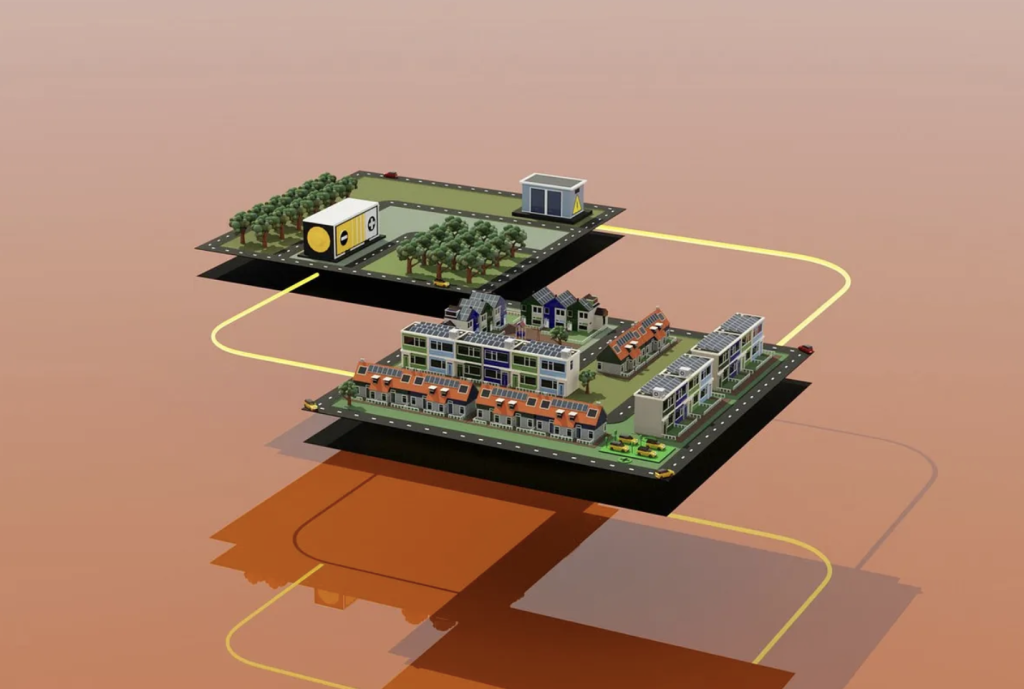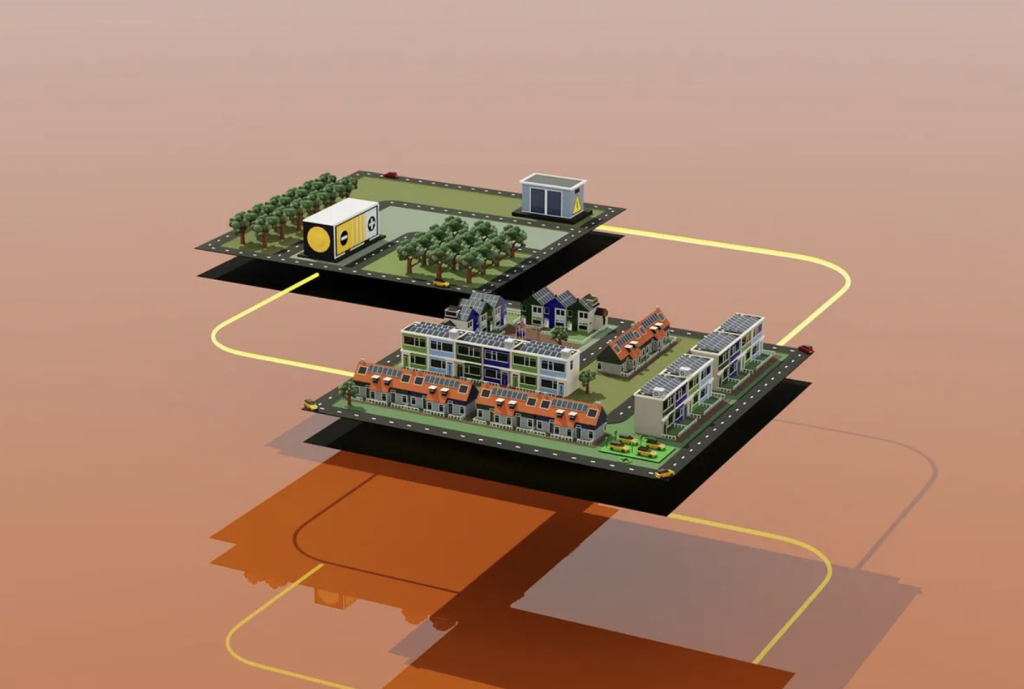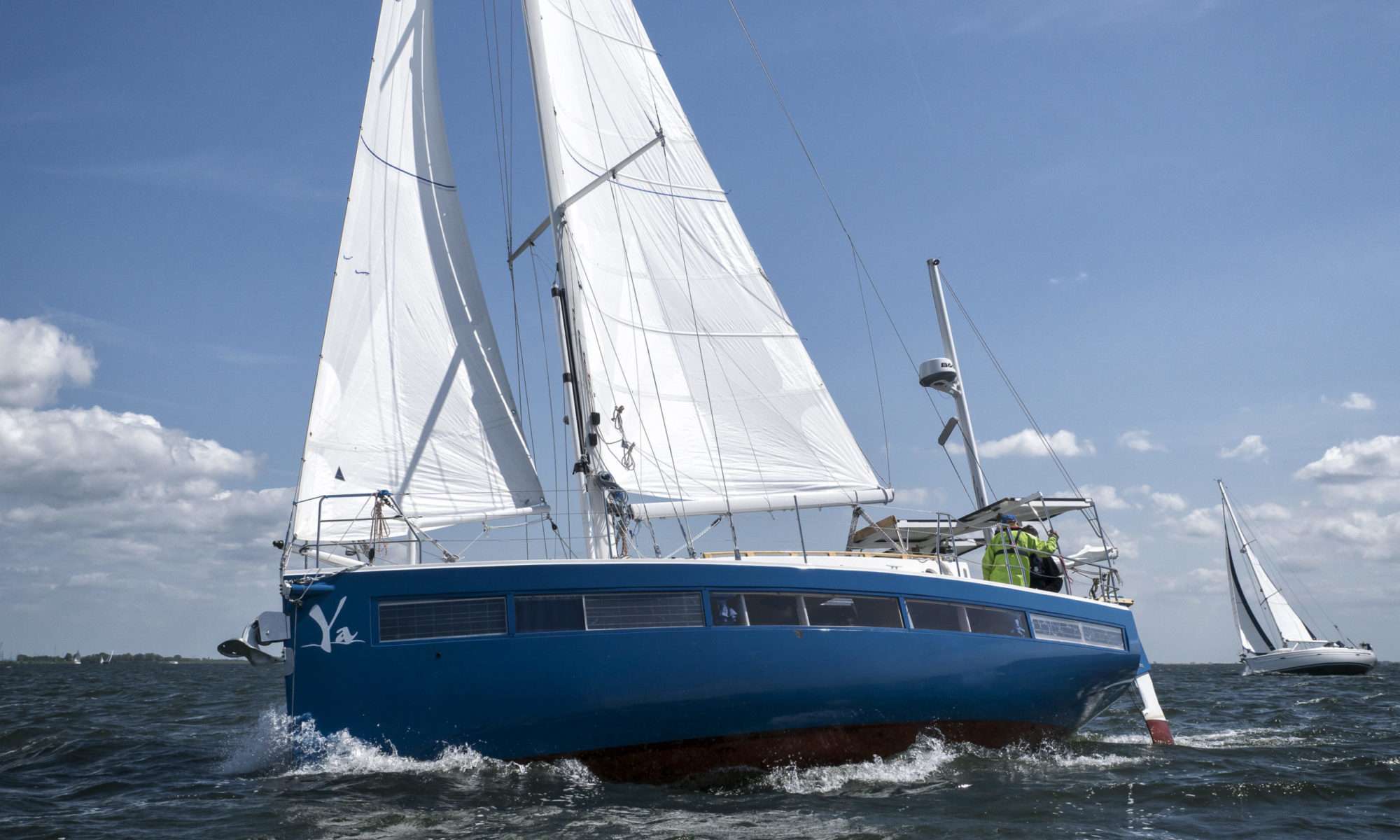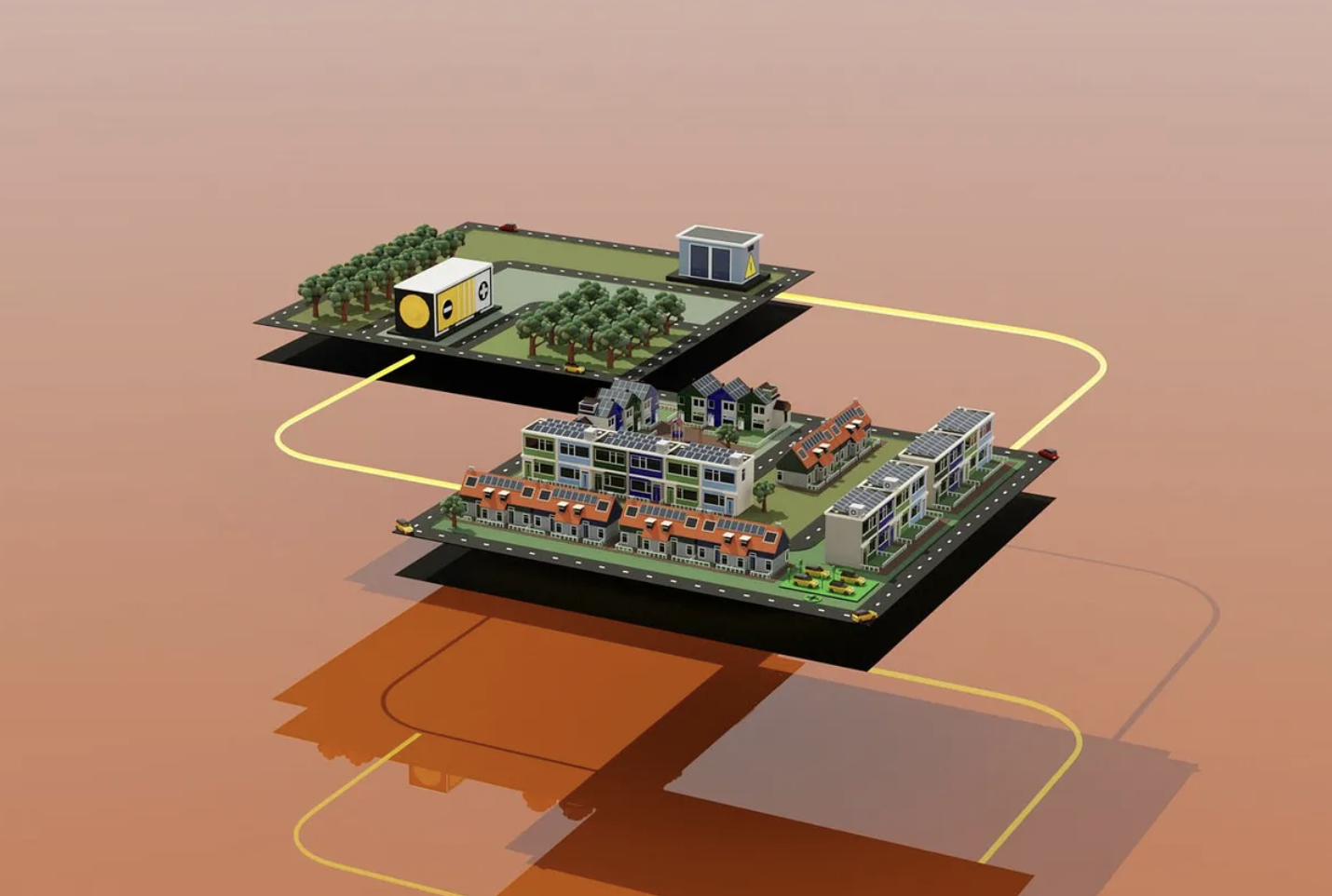We are in the middle of an energy transition process. There is also a political facet on this process. As for millenia, all centralized things will create centralized power. But, now when the decentralized production has grown so rapidly, there is the question what will happen? The right wing powers still fight for nuclear energy, neglecting the fact that the nuclear garbage from uranium/plutonium is dangerous for about 20,000 years. The left wing goes for continuation of the decentralization, because that is cheaper. So you understand, I (Peter) have become a left winger.

But, no matter what I think, there is a site (and in future a book) describing the energy transitinon and predicting a complete new final situation, called the holon. From here, the writer Auke Hoekstra takes over:
How our thinking about an energy system running on solar and wind is evolving
First we discovered solar and wind could become abundant and cheap; now we are discovering we can store electricity, in the future we will discover how to create our energy system bottom-up
We are writing a book on the energy transition titled “Power to the People” with the tagline “abundant clean energy, always and everywhere”. This is my attempt to explain to my fellow writers and to my audience on Twitter and BlueSky how our thinking about energy systems has evolved as we switch from fossil fuels to solar and wind. (Don’t fear: the book will be well written, illustrated, etcetera. This is just a quick personal blog.)
Our journey towards abundant energy from solar and wind
Life is basically the intelligent use of energy and matter to avail us of food, make ourselves comfortable, and procreate.
A few million years ago, our anchestors started to differentiate themselves from other animals by using tools, and about a hundred thousand years ago we learned to control fire to cook our food, keep ourselves warm and protect ourselves from other animals. Fire later allowed us to create the bronze age, iron age and then the industrial revolution.
As we became cleverer, we also found new ways to acquire our energy. First we hunted and gathered but this required about 5 square kilometers per person. Then we invented agriculture and this allowed us to produce thousands of times more food per surface area. This in turn allowed us to invent more advanced technologies that in turn required more energy. First we used wood from forests but our requirements grew so fast that vast deforestation was the result, often leading to the downfall of empires. About four hundred years ago we started to solve our wood problem by digging up and burning coal, and soon we were using steam engines running on coal to mine coal. Around two hundred years ago we added oil and gas to our fossil fuel portfolio. But the clever among us always knew that fossil fuel was temporary. People like Jevons and Mouchot warned us that coal would run out over 150 years ago. About a hundred years ago Thomas Edison stated we were burning away our future and Alexander Graham Bell warned about green house gasses causing global warming.
So we started to look for something better. Not bio-fuels because we knew they simply took too much land. Not fossil fuels because they were inherently scarce. Solar (and its first derivative wind) was always the favorite candidate for visionaries, simply because it’s by far the biggest and longest lasting source in our aptly named solar system. The problem was simply that making advanced, efficient and cheap solar cells and wind turbines is hard. It required advances in the understanding of energy and matter. So we looked at other options. First at water (the second derivative of solar) and since the construction of large hydroelectric dams mostly required knowledge of concrete we managed to get very cheap energy from these. But the availability of hydro is limited to at most 10% of our our energy. Spurred on by the second world war, nuclear fission beat solar and wind to the punch. For a time (especially in the fifties and in the USA) nuclear power plants where ‘all the rage’ with proponents promising energy ‘too cheap to meter’ and popular series like ‘the Jetsons’ promising us flying cars running on atomic energy. However, dealing with the radiation (both during and after production of the energy) proved to be a bigger engineering challenge than we thought and nuclear power became neither too cheap to meter, nor small enough to put in a car. That nuclear power could also be used to make bombs, that it occasionally had high profile accidents, and that we couldn’t agree on how to deal with the waste, didn’t help its popularity. In the end, after the rush of some nations to create power plants to make atom bombs, the expansion of nuclear power slowed down and it started losing ‘market share’ to fossil fuels again.
Fortunately, we never stopped developing solar and wind. After Einstein explained the nature of light in 1907 and the space race required us to develop solar panels at any cost, we finally started to develop better solar cells, and now, around a hundred years after Thomas Edison’s prophetic words, our most abundant and longest lasting source of energy has finally become our cheapest. Wind has become a good second in terms of abundance and price and we are now able to assemble enormous offshore wind turbines in less than a day. On top of that scientists have finally discovered the use of learning curves during transitions. Simply put: you can largely predict how products will become cheaper and better performing as we produce more products. This was originally observed by Wright during the second world war: he saw that every doubling of cumulative production dropped the cost by a predictable amount. Moore’s law made the learning curve more famous by pointing out computing power improved very predictably. It turns out solar and wind are perfect examples of technologies that get predictably cheaper over time. Using learning curves we can now show that the sooner we switch, the faster we learn, and the cheaper the transition becomes.
Storing solar and wind so we always have enough energy
However, where bio fuels, fossil fuels and nuclear fuels are… well… fuels, solar and wind are flows. You could say that fuels come with a bag, while for flows like solar and wind you have to bring the bag yourself. How to store solar and wind has long been a vexing question that has lead to raging scientific debates over the past decades. For a while the conventional wisdom was that solar and wind could never produce more than 60%, 70% or 80% of energy, and we would always need fossil fuel or nuclear for a large part of our energy requirements.
The proposal from the fossil fuel industry was to capture the carbon dioxide (the greenhouse gas) from the exhaust of coal and gas plants and to put it underground. This is called CCS for Carbon Capture and Storage. However, we found that this was expensive (both in terms of money and in terms of energy) and the closer you came to filtering out all carbon dioxide the more expensive it became. We also found that we could not really guarantee that the carbon dioxide stayed underground long enough. And finally, and possibly most damning, we found that the fossil fuel industry severely under-reported how much methane escaped during the production of all fossil fuels. These ‘fugitive emissions’ cause a large amount of global warming, even before we start capturing exhaust using CCS. So although there is an enormous lobby from the fossil fuel industry promoting CCS, it is becoming less and less popular. And capturing was never an option for cars and most other uses where oil is burned. So increasingly the consensus is that we have to get rid of all fossil fuels.
Nuclear is still a viable option. But in a system with a lot of solar and wind, energy is basically free a large part of the time. So an already expensive energy source like nuclear, that preferably runs constantly at maximum power to earn back its investment costs, is not an ideal partner to cheap solar and wind. We were hoping that nuclear would get cheaper now that we revisited it, but that’s not what we are seeing. And by now we also understand why this is. Where solar panels, wind turbines and batteries are ideal examples of the kind of small, standardized, repeatable production processes with a steep learning curve, nuclear power plants are large, long term, and always unique projects, unsuited for the learning curve effect. Many even argue that every time we build a new power plant, we learn new risks that we want to address next time, making the next nuclear power plant more (instead of less) expensive.
So what to do now that CCS and nuclear aren’t the ideal complements to wind and solar that we hoped they would be? What to do when the sun doesn’t shine and the wind doesn’t blow? How do we match supply and demand in a system running predominantly on solar and wind?
It turns out there is a new technology that is even better suited to learning than solar panels: batteries. Battery cells are small and highly standardized units that we can learn how to produce better and better as we churn out more cells. Moreover, they are dependent on material technology that is developing rapidly. There are thousands of possible chemistries that can be created in a myriad of ways and artificial intelligence is increasingly able to quickly test the different alternatives in virtual environments on the computer. The result is that battery prices are plummeting at an astonishing rate of 28% of every doubling of production and that production increases by 60% per year. These are improvement rates that even solar panels and computer chips cannot keep up with. A new age with plenty of electricity storage is upon us and will completely change our electricity systems. On top of this batteries are also increasingly longer lasting (which decreases the cost of storage even further) and using less and less expensive materials.
Batteries are perfect to cover a few days of storage, especially since putting energy into storage and then getting it out is extremely efficient with batteries. But for long term storage you need something that is even cheaper per kWh of energy stored. And because you use this storage so infrequently it doesn’t matter if the process of storing and retrieving energy is less efficient. Electro fuels – or eFuels for short – fit this bill. They can for example be created by splitting water into hydrogen and oxygen. This hydrogen you can store (e.g. in underground salt caverns) or turn into another liquid fuel like methanol. And on top of that we are getting a handle on demand response. And when demand can follow the supply of solar and wind, you don’t need storage buckets made from batteries or eFuels. So the new system that consensus is building towards is one where solar and wind provide almost all energy, with ten to twenty percent of energy flowing through batteries at one time or another and five to ten percent of energy flowing through the eFuel process. (Of course some countries have abundant hydro or geothermal and for them it becomes even easier.)
Holons: semi-autonomous energy systems

So the first shift was from scarce fuels (fossil or otherwise) to abundant flows (mainly solar and wind). The second shift (that we are still in the middle of) is from an electricity system without storage (because fuels bring their own bag) to one with storage (as the complement to solar and wind). The third shift is from a centralized top-down system where the energy comes from far away, to a decentralized bottom-up system where you get your energy much more locally. That last insight is still so fresh that we consider it the most important part of this book.
(We also made a – for now Dutch – website about it: holons.energy.)
The concept we like to use for this is the holon. Holons are semi-autonomous energy systems. The idea is that a building has its own energy storage and possibly energy production and that it takes care of matching supply and demand as much as possible. This results in cheaper energy for the building and it unburdens the electricity grid because less energy needs to be transported and peaks are flattened. Buildings are grouped into business parks or neighborhoods that add more storage and supply and again take care of their own supply and demand as much as possible. Again this reduces energy prices and alleviates use of the grid. By repeating this process from the bottom-up we create an energy system where the local parts are largely energy independent. Most of the energy doesn’t come from thousands of kilometers away but is produced locally or at least in the country or state itself. The system is inherently resilient and stable because every building and neighborhood has storage in case of a power outage somewhere else, and smart demand-response means that important uses of energy (e.g. communication infrastructure and hospitals) can be prioritized.
From an engineering perspective I like that holons are the best way to match supply and demand, thereby decreasing the need for generation and transport, and optimally using storage.
From a political perspective I like that in this age of polarization, holons have the potential for broad popularity. On the left people will like that it supports clean energy from wind and solar. On the right people will like that it offers your family, neighborhood and country more independence and freedom. Everybody can like the resilience and long term stability such a system provides. So whether you are a treehugger or a prepper: holons tick a lot of boxes.
From a social perspective I like that holons keep the energy flows (and therefore money flows) more locally so wealth doesn’t trickle away from families and local communities. Holons also have the potential to increase social cohesion because you can optimize them by trading supply, storage and flexibility locally.
From a personal perspective I like that holons offer us a positive actionable perspective for a future with abundant clean energy.
So that’s my take on where we are in the energy transition.

